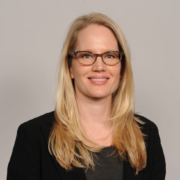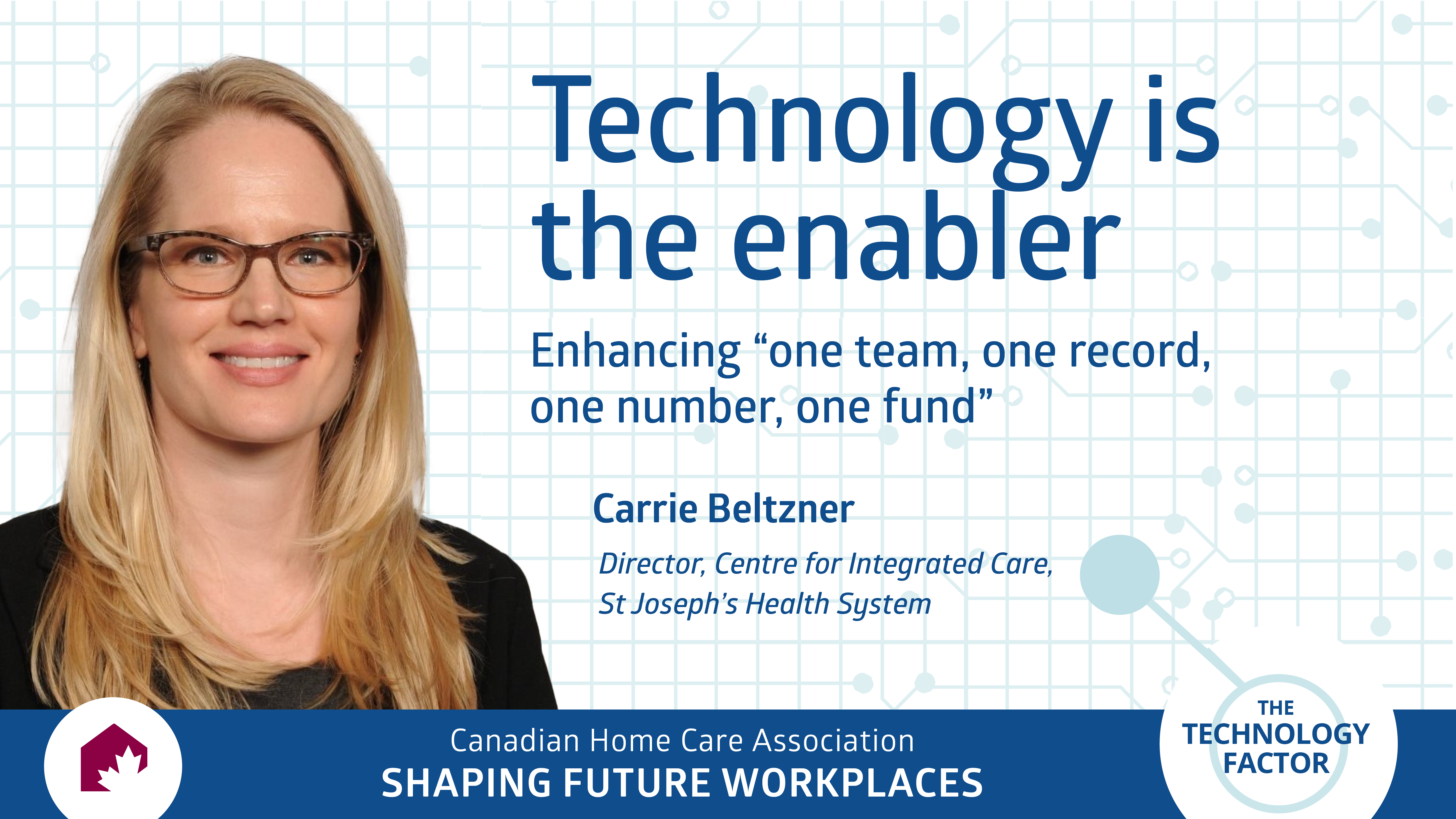Technology is the enabler
Enhancing “one team, one record, one number, one fund”
St. Joseph’s Health System’s Integrated Comprehensive Care (ICC) program is an evidence-based model of “bundled care” that supports employee satisfaction and retention. And as is the case across the country, health human resource retention is a priority at the Centre.

ICC is a program built around the framework of one team, one record, one number to call 24/7 – for staff, patients[ii], and their families wherever they receive care – in hospital, at home or elsewhere in the community. Working outside of traditionally siloed funding models, teams are enabled by one fund, a bundled payment, that allows funding to follow the patient across the continuum; care is provided at the right time and in the right setting as defined by care needs. The component parts have the following implications:
- One team: all disciplines participate as one care team committed to being responsive to each other as equal members
- One record: a shared electronic health record accessible to all members of the team with synchronous updates from all points of care along the continuum
- One number: a single, toll-free number that provides individuals with access to their care team 24/7
- One Fund: allowing healthcare leaders to develop new levers to break down traditional healthcare silos.
The ICC program works with a “lead home care agency”, St. Joseph’s Home Care, which helps the home care team to feel more connected and supported as a sector and as part of the health system. Through cross-appointed team members, regular team meetings, and team huddles (via telephone or video), staff feel informed and better prepared to provide care.
The supportive philosophy of care and trust within the team means that staff practice to full scope and can be more responsive to needs. The patient outcome is assessed in the context of the whole journey of care. There is no need to seek approval for extra home care visits but rather an expectation that, on a macro level, more home care visits are reflected in earlier discharge or emergency room avoidance, for example. As opposed to narrowly defining the scope of practice, there is openness to working together to make best use of capacity across providers to better support the patient. Home care staff can consult with a member of the team to enable care within clinical scope as directed by another professional. For example, a physiotherapist directing a nurse over the phone on treatment that is within scope is not only a more effective use of resources, but it provides the patient with immediate care and continuity – so much better than the siloed approach that might result in the family being told that they must call someone else for that specific issue.

The respect that home care staff experience from clients and colleagues positively affects retention. Notwithstanding, there are shortages and managing health human resource pressures on care is, and will likely continue to be, a daily priority. The team collaborates to determine the best patient care alternative, which in the absence of staff might be a virtual visit – telephone or video – assuming the client and their environment are suitable.
The conversations at the management level address the service delivery trends to better understand how resources are contributing to an outcome, such as community staffing decisions impacting hospital lengths of stay. Discussion begins with best practice care standards and pathways. Funding constraints are secondary. The ongoing dialogue between and within acute and home and community care serves to educate and adjust practice as the evidence directs. This approach comes from establishing a shared vision, transparency, trust, and hard work upfront when developing programs. As opposed to command and control, it’s a collective goal to provide the best care within the existing resources and be open to shuffling resources, and looking at other ways of delivering care, including the use of technology, to provide services.
 The outcomes of the team’s decisions are assessed, and future practice is informed by ongoing readmission reviews and Integrated Decision Support (IDS)[iii] data and analytics. The IDS data-sharing platform reports on every interaction that the patient is having with hospitals and community providers to produce evidence as to the impact of decisions, for example, reduced emergency department visits, readmissions, and length of stay. It provides the opportunity for better system planning and improved patient outcomes.
The outcomes of the team’s decisions are assessed, and future practice is informed by ongoing readmission reviews and Integrated Decision Support (IDS)[iii] data and analytics. The IDS data-sharing platform reports on every interaction that the patient is having with hospitals and community providers to produce evidence as to the impact of decisions, for example, reduced emergency department visits, readmissions, and length of stay. It provides the opportunity for better system planning and improved patient outcomes.
IDS is a business intelligence tool that provides an integrated view of patient activity across every other IDS participating organization.
At the end of the day, technology is not the driver in health care. Rather, care is enabled by technology – to support remote access, consistent practice, easily accessible synchronous documentation, ongoing refinement of best practice, and much more. It is essential to the future of health care, meeting client expectations and supporting practitioners to give their best.
References
[i] Website St. Joseph’s Health System Centre for Integated Care. https://stjoescic.ca/about-us
[ii] The terms patient and client are used interchangeably.
[iii] Website Ontario Hospital Association Integrated Decision Support. https://www.oha.com/data-and-analytics/integrated-decision-support



